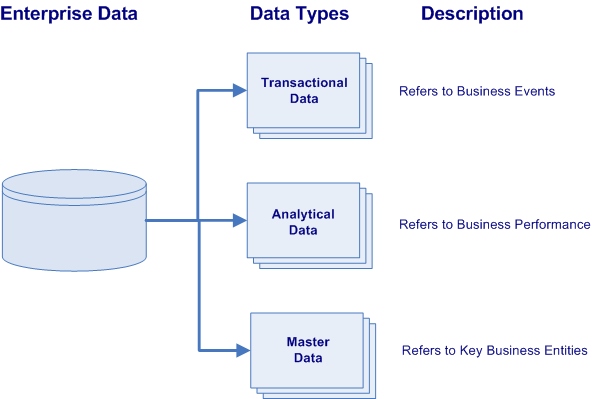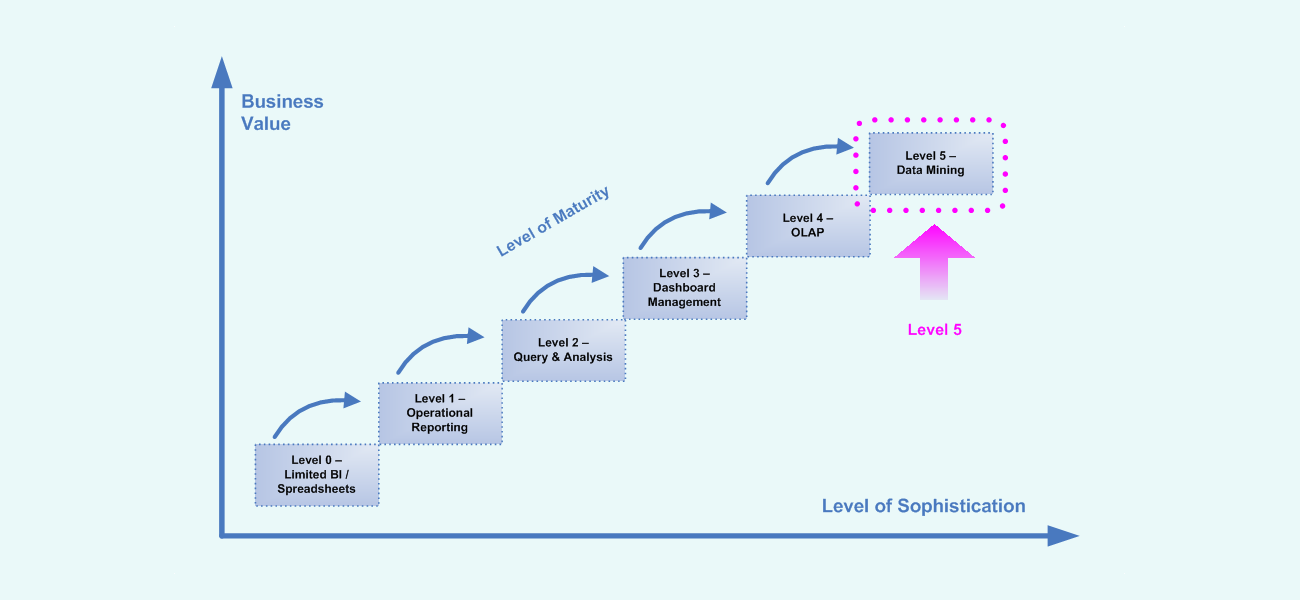Types of Enterprise Data (Transactional, Analytical, Master)
- All business enterprises have three varieties of physical data located within their numerous information systems. These varieties of data are characterized by their data types and their purpose within the organization.
- • Transactional Data
- • Analytical Data
- • Master Data
Transactional data supports the daily operations of an organization (i.e. describes business events). Analytical data supports decision-making, reporting, query, and analysis (i.e. describes business performance). While master data represents the key business entities upon which transactions are executed and the dimensions around which analysis is conducted (i.e. describes key business entities).
Transactional Data
Transactional data are the elements that support the on-going operations of an organization and are included in the application systems that automate key business processes. This can include areas such as sales, service, order management, manufacturing, purchasing, billing, accounts receivable and accounts payable. Commonly, transactional data refers to the data that is created and updated within the operational systems. Examples of transactional data included the time, place, price,discount, payment methods, etc. used at the point of sale. Transactional data is normally stored within normalized tables within Online Transaction Processing (OLTP) systems and are designed for integrity. Rather than being the objects of a transaction such as customer or product, transactional data is the describing data including time and numeric values.
Analytical Data
Analytical data are the numerical values, metrics, and measurements that provide business intelligence and support organizational decision making. Typically analytical data is stored in Online Analytical Processing (OLAP) repositories optimized for decision support, such as enterprise data warehouses and department data marts. Analytical data is characterized as being the facts and numerical values in a dimensional model. Normally, the data resides in fact tables surrounded by key dimensions such as customer, product, account, location, and date/time. However, analytical data are defined as the numerical measurements rather than being the describing data.
Master Data
Master data is usually considered to play a key role in the core operation of a business. Moreover, master data refers to the key organizational entities that are used by several functional groups and are typically stored in different data systems across an organization. Additionally, master data represents the business entities around which the organization’s business transactions are executed and the primary elements around which analytics are conducted. Master data is typically persistent, non-transactional data utilized by multiple systems that defines the primary business entities. Master data may include data about customers, products, employees, inventory, suppliers, and sites.




Hi,
Is there any reason why you didn’t describe Analytical Data?
Thanks.
This is an excellent question. A soon as I am going to post the the explanation of analytical data.
Thank you for your feedback.
– Adam Getz
Author, BI-INSIDER.COM
An explanation of analytical data has just been added to this post. Thank you for your feedback.
– Adam Getz
Author, BI-INSIDER.COM
What is the difference between operational and transactional data? Your post does not consider operational data as type of enterprise data.
Thank you,
Samuel Akoto
Operational data and transactional data are the same thing. They are synonymous.
When you think of data governance do you include all 3 types?
Great defonition. Thank you.
Can you explain how these three are related to each other?
What about organizational data, where does that fit into this.
Organizational data is usually under MASTER data
Hi – I am curious to know how does Data governance relate to those group of data? Do you have to defined a governance framework around each of the enterprise data group when governing those data or just to the master data? Thank you!